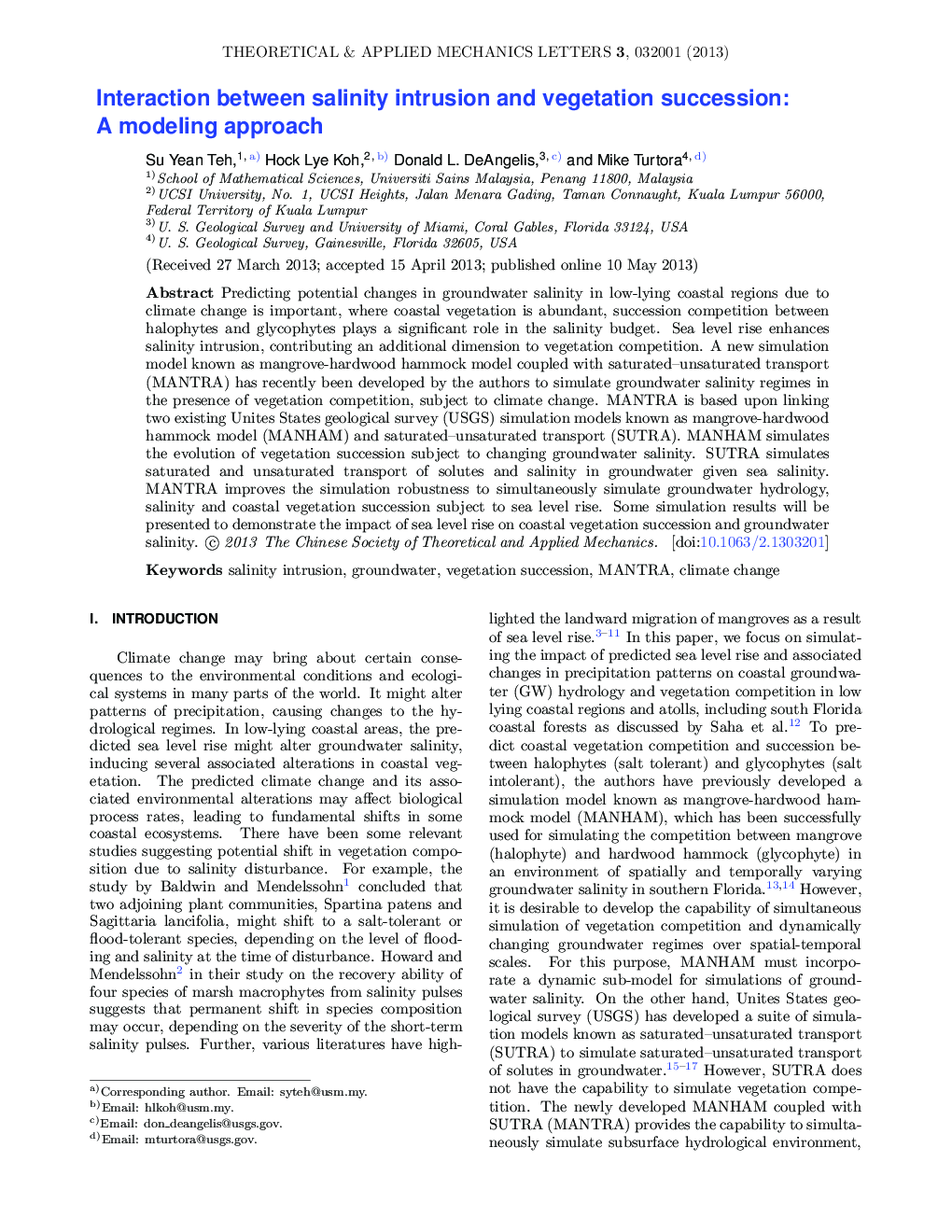| Article ID | Journal | Published Year | Pages | File Type |
|---|---|---|---|---|
| 808370 | Theoretical and Applied Mechanics Letters | 2013 | 29989 Pages |
Predicting potential changes in groundwater salinity in low-lying coastal regions due to climate change is important, where coastal vegetation is abundant, succession competition between halophytes and glycophytes plays a significant role in the salinity budget. Sea level rise enhances salinity intrusion, contributing an additional dimension to vegetation competition. A new simulation model known as mangrove-hardwood hammock model coupled with saturated-unsaturated transport (MANTRA) has recently been developed by the authors to simulate groundwater salinity regimes in the presence of vegetation competition, subject to climate change. MANTRA is based upon linking two existing Unites States geological survey (USGS) simulation models known as mangrove-hardwood hammock model (MANHAM) and saturated-unsaturated transport (SUTRA). MANHAM simulates the evolution of vegetation succession subject to changing groundwater salinity. SUTRA simulates saturated and unsaturated transport of solutes and salinity in groundwater given sea salinity. MANTRA improves the simulation robustness to simultaneously simulate groundwater hydrology, salinity and coastal vegetation succession subject to sea level rise. Some simulation results will be presented to demonstrate the impact of sea level rise on coastal vegetation succession and groundwater salinity.
